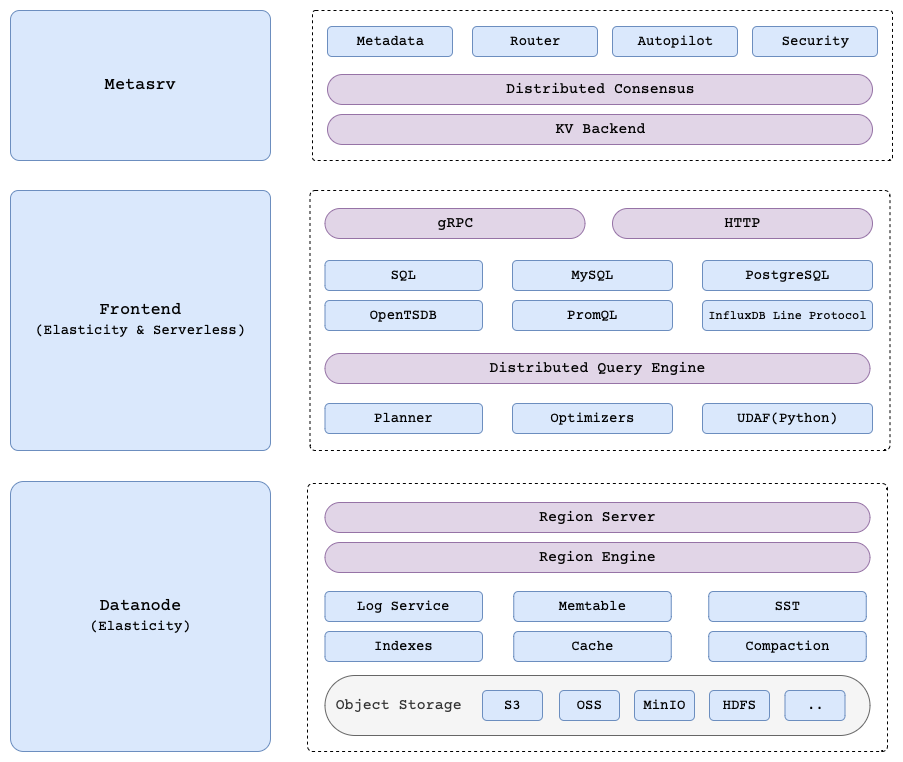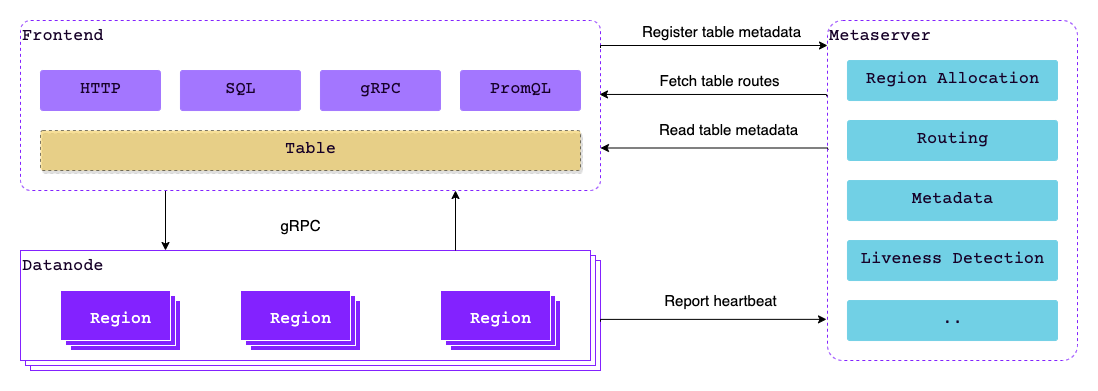Architecture

Components
In order to form a robust database cluster and keep complexity at an acceptable level, there are three main components in GreptimeDB architecture: Datanode, Frontend and Metasrv.
- Metasrv is the central command of GreptimeDB cluster. In a typical cluster deployment, at least three nodes is required to setup a reliable Metasrv mini-cluster. Metasrv manages database and table information, including how data spread across the cluster and where to route requests to. It also keeps monitoring availability and performance of Datanodes, to ensure its routing table is valid and up-to-date.
- Frontend is a stateless component that can scale to as many as needed. It accepts incoming requests, authenticates them, translates them from various protocols into GreptimeDB internal gRPC, and forwards to certain Datanodes under guidance from Metasrv by table sharding.
- Datanodes hold Regions of tables in GreptimeDB cluster. It accepts read and write requests sent from Frontend, executes them against its data, and returns the handle results.
These three components will be combined in a single binary as GreptimeDB standalone mode, for local or embedded development.
You can refer to architecture in contributor guide to learn more details about how components work together.
How it works

- You can interact with the database via various protocols, such as ingesting data using InfluxDB line protocol, then exploring the data using SQL or PromQL. The Frontend is the component that clients connect to and operate, thus hide Datanode and Metasrv behind it.
- Assumes a user uses the HTTP API to insert data into the database, by sending a HTTP request to a Frontend instance. When the Frontend receives the request, it then parses the request body using corresponding protocol parser, and finds the table to write to from a catalog manager based on Metasrv.
- The Frontend relies on a push-pull strategy to cache metadata from Metasrv, thus it knows which Datanode, or more precisely, the Region a request should be sent to. A request may be split and sent to multiple Regions, if its contents need to be stored in different Regions.
- When Datanode receives the request, it writes the data to the Region, and then sends response back to the Frontend. Writing to the Region will then write to the underlying storage engine, which will eventually put the data to persistent device.
- Once Frontend has received all responses from the target Datanodes, it then sends the result back to the user.